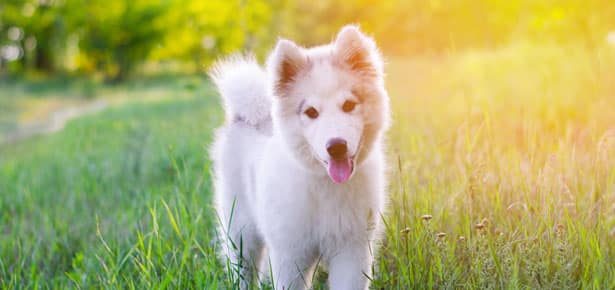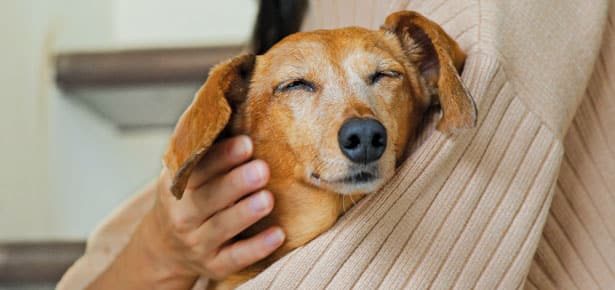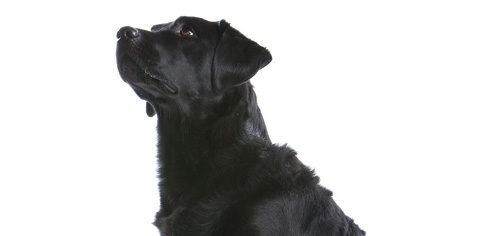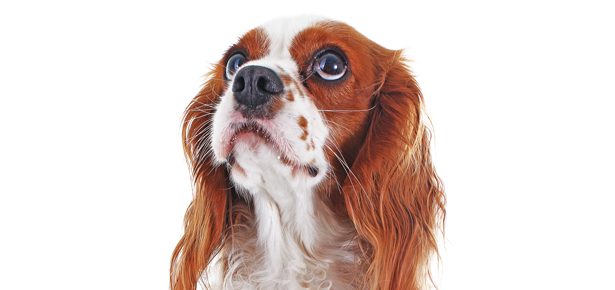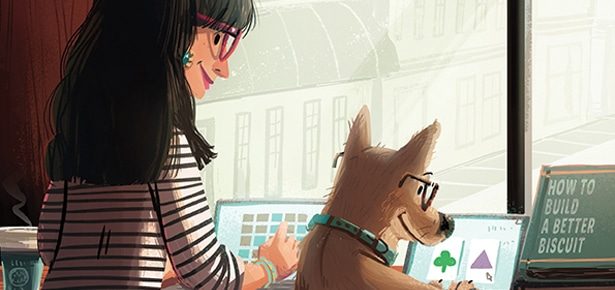

Can You Build a Better Brain for Your Dog?
Science lends a helping hand
It may be hard to believe, but you can actually change the physiology of your dog’s brain. You can make it larger and more efficient simply by providing certain experiences for your pet. These brain-enhancing experiences will make your dog more intelligent and give his personality an added degree of stress resistance.
The research supporting these startling claims began in the 1940s when Canadian psychologist Donald O. Hebb took home a few lab rats and gave them to his children to keep as pets. The children played with these animals and let them run around and explore much of Hebb’s family home. Obviously the life these rats were leading and the environments they were getting to explore were much more complex and stimulating than the standard barren laboratory cage, which might include only some wood shavings to rest on, a water bottle, and a food tray. When the rats were later tested for their ability to learn complex mazes (the rat equivalent of an intelligence test), they proved to be much smarter than their littermates that had been raised in boring cages in which they had little to do or explore and where there were no problems or interesting situations that allowed them to exercise their minds.
Shortly after this first set of tests on the pet rats, some of Hebb’s research associates repeated these experiments using dogs. They compared the learning ability of pet reared dogs (who received all of the stimulation and varied experiences that a typical family dog normally has) with that of dogs reared in the usual barren lab kennels. Perhaps unsurprisingly, based on the work with rats, they found that the dogs reared in the more complex home environment not only learned faster but seemed to be less fearful and considerably less stressed in the testing situations. Over the years, researchers have proven that these behavioural changes are the result of actual changes in the physiology of the animals’ brains. The brains of animals that have lived in changing and complex environments actually become larger. New connections develop between existing neurons in the cortex as a result of experience. Recent evidence demonstrates that it is even possible to grow new neural cells in key areas of the brain that are associated with learning, memory, and the organization of behaviour.
The important aspects of the animals’ experiences which cause these positive changes in their brains involves exposure to a wide variety of exciting experiences, interesting places, and things that are novel. It is best when these new experiences and situations are combined with frequent opportunities to learn new things, solve problems, and to freely investigate, manipulate, and interact with objects and environmental features. The data is unambiguous in showing that this leads to individuals who not only tend to be more inquisitive and are more able to learn quickly and perform complex tasks, but also who are less fearful and emotional.
Recent research by psychologist Norton W. Milgram and his associates at the University of Toronto has shown that the benefits of such activities and encounters are not restricted to growing puppies. Adult and even elderly animals not only are subject to the same benefits from having richer environments, but problem solving experiences seem to help to offset the usual decline in mental efficiency seen in older dogs. For those of us who want to give our dogs the advantage of a more efficient brain, the trick is simply to keep the dog’s mind active, exposing him to new experiences and giving him new things to learn and puzzles to work out. You can provide different some of these simply by taking your dog to new places and on different routes during daily walks, or including the dog on day trips or when out doing various chores. A little bit of effort to pose questions that your dog must answer, however, will work even better.
For most dogs, using food as the reward for solving problems and finding things will keep their motivation high. An easy way to do this is to get one of a number of different dog toys that can be filled with kibble or treats. When the object is rolled around or knocked about it will dispense bits of kibble. If you are willing to put up with a bit of controlled destruction, you can put kibble or treats inside a cardboard box, old towel or rag, or crumpled plastic jug and allow your dog to tear the item apart to get to the food inside. The cardboard rolls that toilet paper and paper towel rolls come on are great for this. Put some kibble in them, crumple the ends and let the pup tear apart the “toy” to get to the food. Many dog toys are hollow, such as Kongs and hollow nylon bones, and these can be filled with a dog biscuit, peanut butter, cheese or the like. The dog has to work at getting the food out, thereby exercising his brain. If you moisten some kibble, stuff the toy, and then freeze it, by the next day you will have a food stuffed toy that the dog will have to work at for quite a while before getting at the good stuff.
One variation on this theme involves turning meals into searches. Simply divide your dog’s meal into small portions, each in a small dish or container (or loose on the floor if you’re okay with that). Now hide them around the house and let the dog search for them. At first you will have to make the hiding places fairly obvious, but later you can make finding the next portion of dinner more of a challenge.
Actually, all forms of games based upon hide and seek are good. If you have someone to help you (I find visiting grandchildren are great for this), one person can hide and the other then encourages the dog to go and find them with a command like “Find Becky.” In the beginning, the person who is hiding might have to actually call the dog from some place out of sight. Once the hidden person is found, the dog either gets a treat or gets a toy to play with. You can actually play a form of “canine tennis” with the dog serving as the ball by then sending the dog back to find the first person (who has now moved to a new place); they then send the dog back to the second person (who has also moved their hiding place) and so forth. If your dog spends time outside, you must recognize that the average yard is usually a fairly boring and barren environment except for interesting things that might pass nearby on the other side of the fence. You can make this environment a bit more stimulating by hanging ropes or inner tubes from a branch or from some other elevated item in the yard for the dog to play tug with. Change the terrain a bit by adding some big boxes that can serve as tunnels or platforms for the dog to climb on. Small logs and lengths of PVC pipe (perhaps 5 inches or 13 cm in diameter) can be laid down for the dog to walk and jump over while playing. If you have more than one dog, some barriers to hide behind or enclosures to hide in are useful and the dogs will often create their own games using them. A child’s wading pool with some water or sand can provide some additional chances for play and interaction. Changing things in the yard frequently will also provide stimulation.
Generally speaking, however, the dog is apt to find the environment in your house where people are moving about more exciting that the average yard. That means that if you want your dog to spend some time outside you should go out there to play with him occasionally. Remember, you are not only building your relationship with your dog but actually building him a better brain.
By the way, the same process works for people. Providing yourself with new problems to solve and new environments to interact with will not only keep you entertained but build your brain and help avoid the effects of aging. Psychologists often summarize this by saying of the mind, “Use it or lose it”. Simple things like crossword puzzles and Sudoku help, as does reading, dancing, language learning, new “brain building” computer games, such as those at luminosity.com, and, perhaps most enjoyably, exploring new environments with your dog as a companion. The latter will not only improve your quality of life but help both you and your pet improve your brains—not a bad deal for engaging in a pleasant pastime!
>> Go! Thrill your dog with Modern Dog’s top interactive toy picks moderndogmagazine.com/interactivedogtoys
Join the newsletter and never miss out on dog content again!
"*" indicates required fields
By clicking the arrow, you agree to our web Terms of Use and Privacy & Cookie Policy. Easy unsubscribe links are provided in every email.
